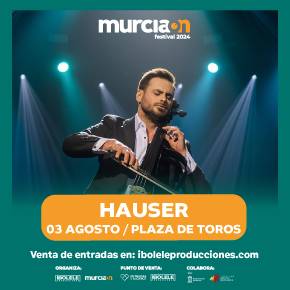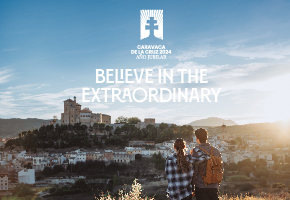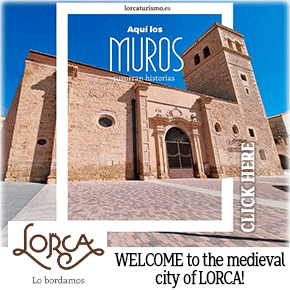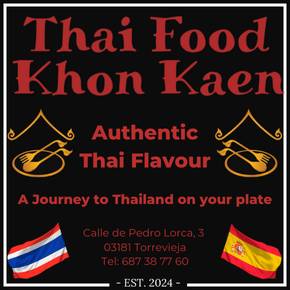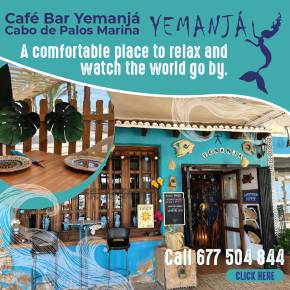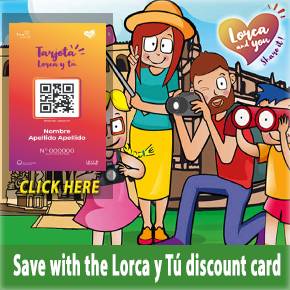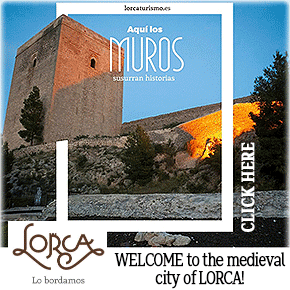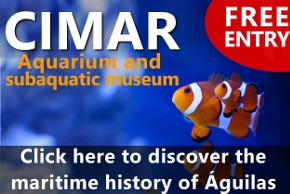November 16 Free guided tour of the historic monuments of Lorca
A free route uncovering some of the most important architectural treasures of the historic city centre of Lorca

Lorca is a city rich in history, its strategic position above the Guadalentín Valley having attracted human settlers for thousands of years. The Argarics, Iberians, Moors, Jews and Christians all left their footprints in the city, which contains many important monuments and interesting buildings.
The imposing medieval castle (the Fortaleza del Sol) dominates the skyline, as it has since Lorca was a frontier city between Christian Spain and the Moorish kingdom of Granada in the 13th to 15th centuries. Remains of the Jewish synagogue of the Jewish quarter just below it still survive intact, and the city at its foot is filled with ornate Baroque buildings.
 On this very popular tour an official regional tour guide shows visitors around the most important historical buildings in the old quarter of central Lorca, including the former Collegiate Church of San Patricio and the Town Hall, on a free guided tour with commentary in English.
On this very popular tour an official regional tour guide shows visitors around the most important historical buildings in the old quarter of central Lorca, including the former Collegiate Church of San Patricio and the Town Hall, on a free guided tour with commentary in English.
The 2-hour visit starts at the statue of King Alfonso X in the Plaza de España at 18.00 and booking is essential as places are limited. To take part please go directly to the online booking system.
When visiting the city of Lorca your first port of call should always be the tourist office (Plaza de España, 7, telephone 968 441914, email lorcaturismo@lorca.es).
For more information about what to see, what to do and where to eat and drink in Lorca visit the home page of Lorca Today.
Oficina de Turismo de Lorca

The rich and extensive history of Lorca has left a legacy of archaeological sites, and historic buildings, around which the modern City has built its tourism industry. Amongst these are Lorca Castle, the Jewish Quarter of the castle and Synagogue,  Plaza de España, Colegiata de San Patricio, Museo de Arqueologico Municipal, Iglesia de San Francisco, Casa Huerto Ruano, Palacio de Guevara, Iglesia de San Mateo, Pósito de los Panaderos, Convento Virgen de las Huertas, Antiguo Convento de la Merced, Iglesia del Carmen and the Teatro Guerra.
Plaza de España, Colegiata de San Patricio, Museo de Arqueologico Municipal, Iglesia de San Francisco, Casa Huerto Ruano, Palacio de Guevara, Iglesia de San Mateo, Pósito de los Panaderos, Convento Virgen de las Huertas, Antiguo Convento de la Merced, Iglesia del Carmen and the Teatro Guerra.
Unfortunately Lorca has also been prone to natural disaster, suffering a Gota Fría on September 28th 2012, as well as an earthquake which measured 5.3 on the Richter scale on 11th May 2011 and claimed 9 lives. Since this earthquake the city has been rebuilding, winning recognition for its Lorca, Open for Restoration initiative, which used the restoration of the city as a tourist attraction whilst it rebuilt its historical buildings, some of which are currently still not open.
 The tourist office itself has temporarily relocated until the renovations are completed and is on Calle San Patricio near the church.
The tourist office itself has temporarily relocated until the renovations are completed and is on Calle San Patricio near the church.
Lorca also has an area of coastline incorporating the Parque Regional de Cabo Cope - Puntas de Calnegre, in the Sierra de Almenara, which includes the beaches of, Puntas de Calnegre, Baño de las Mujeres, San  Pedro, El Siscal, Cala Honda, Cuartel del Ciscar, Junquera, Cala de la Gruta, Cala Leña, Los Hierros, Cala Blanca and Playa Larga, although many are accessible only through agricultural exploitations.
Pedro, El Siscal, Cala Honda, Cuartel del Ciscar, Junquera, Cala de la Gruta, Cala Leña, Los Hierros, Cala Blanca and Playa Larga, although many are accessible only through agricultural exploitations.
However, in spite of its many attractions, the name of Lorca is synonymous with Easter, (Semana Santa) its biblical parades of International Tourist Interest status and famous throughout Spain. The week includes a  series of parades in which the whites (Paso Blanco) and blues (Paso Azúl) try to outdo each other with the magnificence of their embroideries and the skill and daring of their horsemen.
series of parades in which the whites (Paso Blanco) and blues (Paso Azúl) try to outdo each other with the magnificence of their embroideries and the skill and daring of their horsemen.
Lorca also has a Parador hotel, located within the complex of its historic castle.
Opening hours for Lorca Tourist Office:
- Monday to Friday: 10.00 to 14.00 and 16.30 to 19.00.
- Saturday: 10.00 to 14.00 and 16.30 to 18.30.
- Sunday: 10.00 to 14.00.
For more local news, events and visiting information go to the home page of Lorca Today



